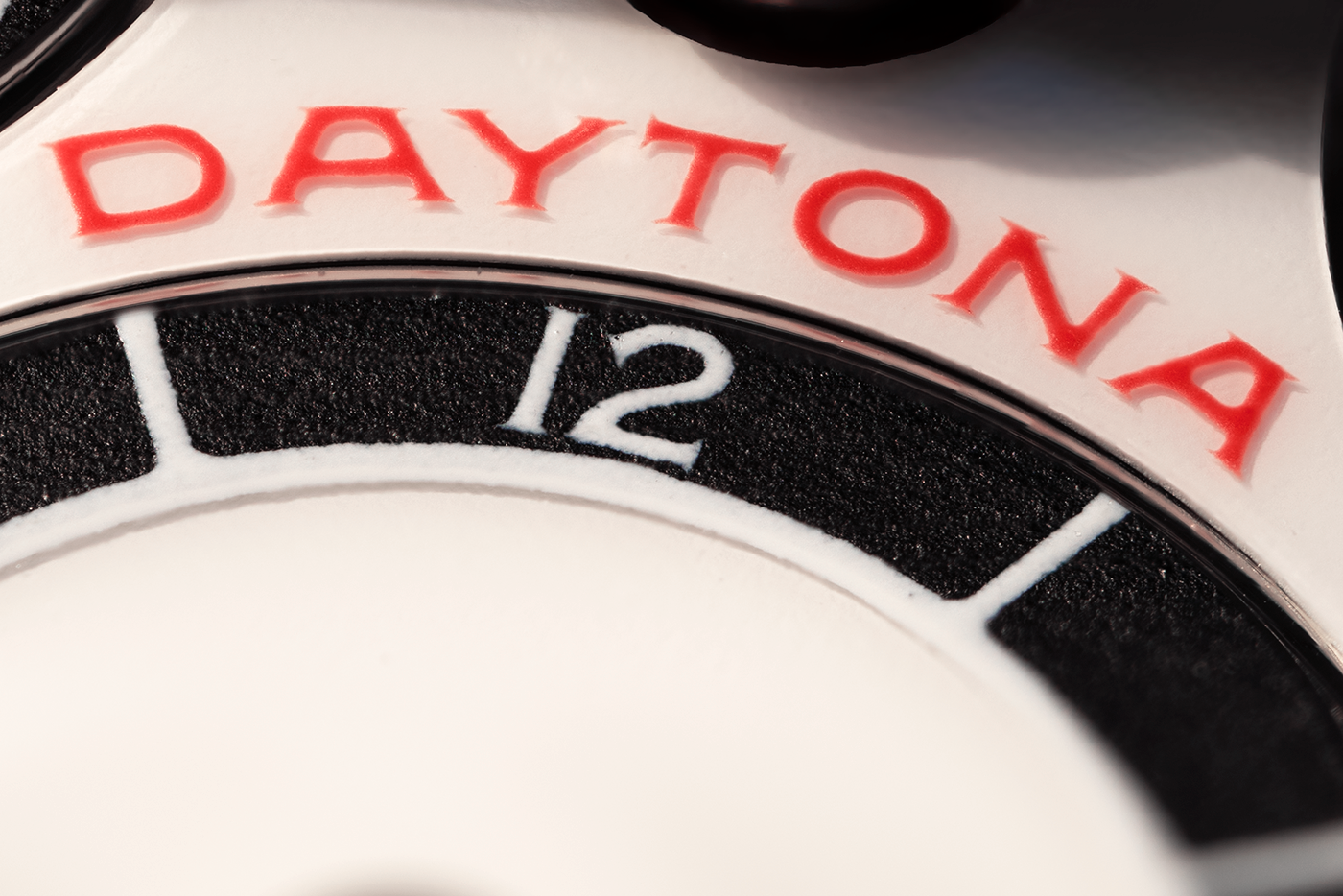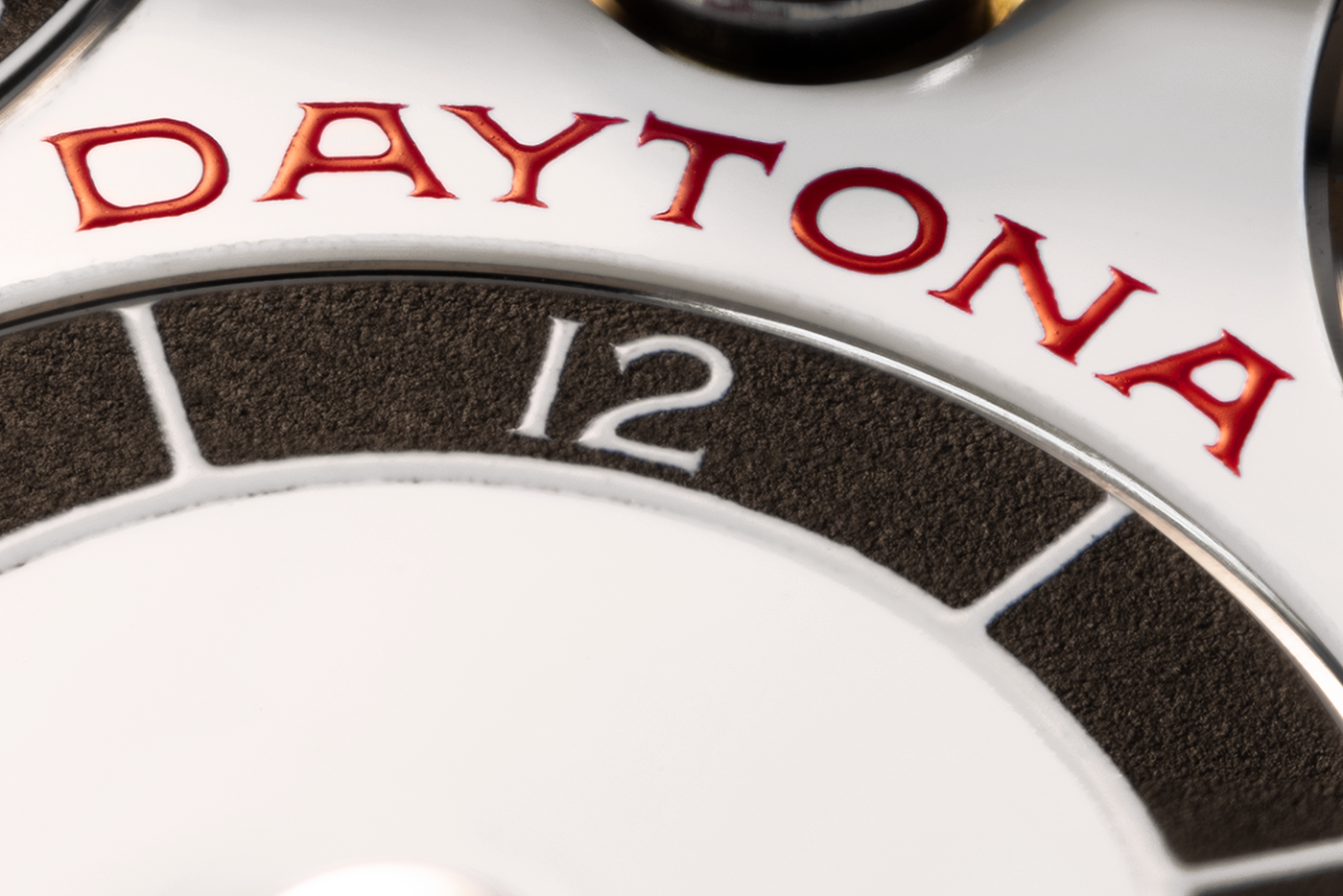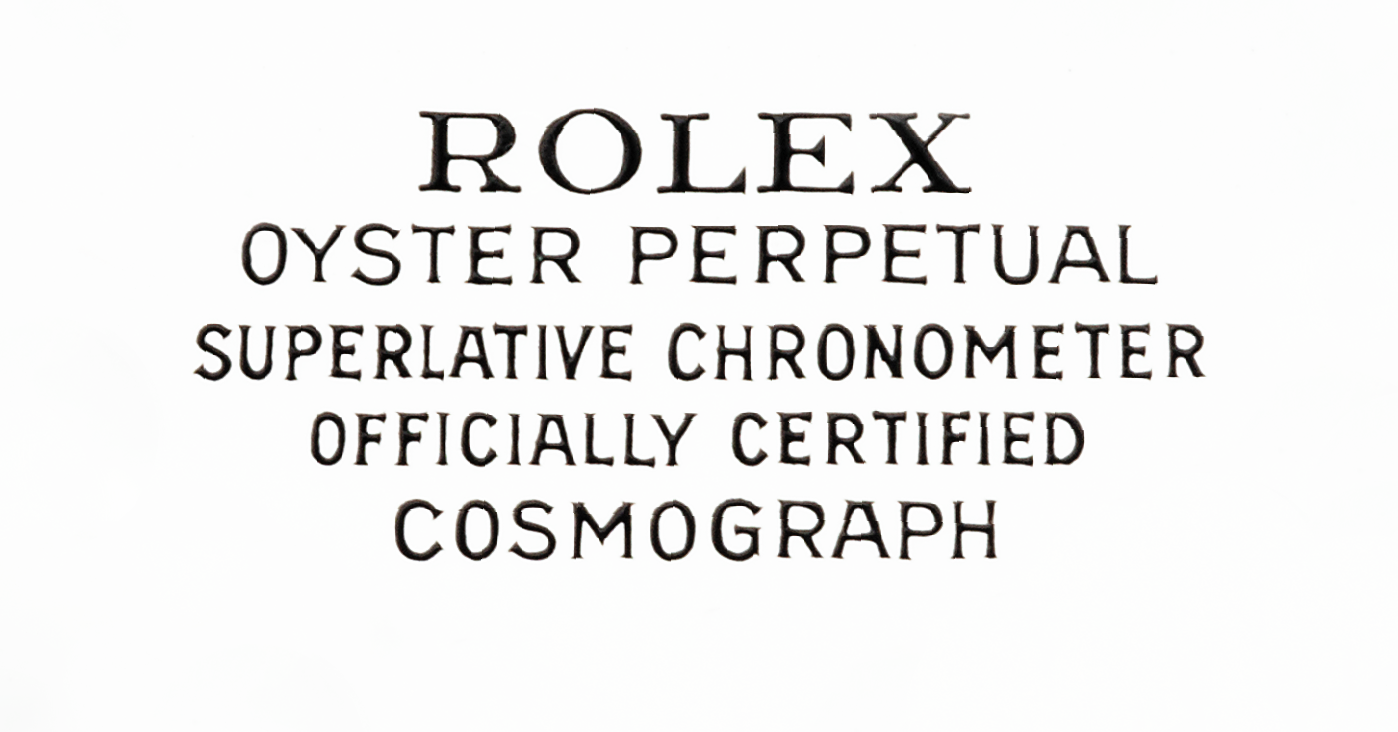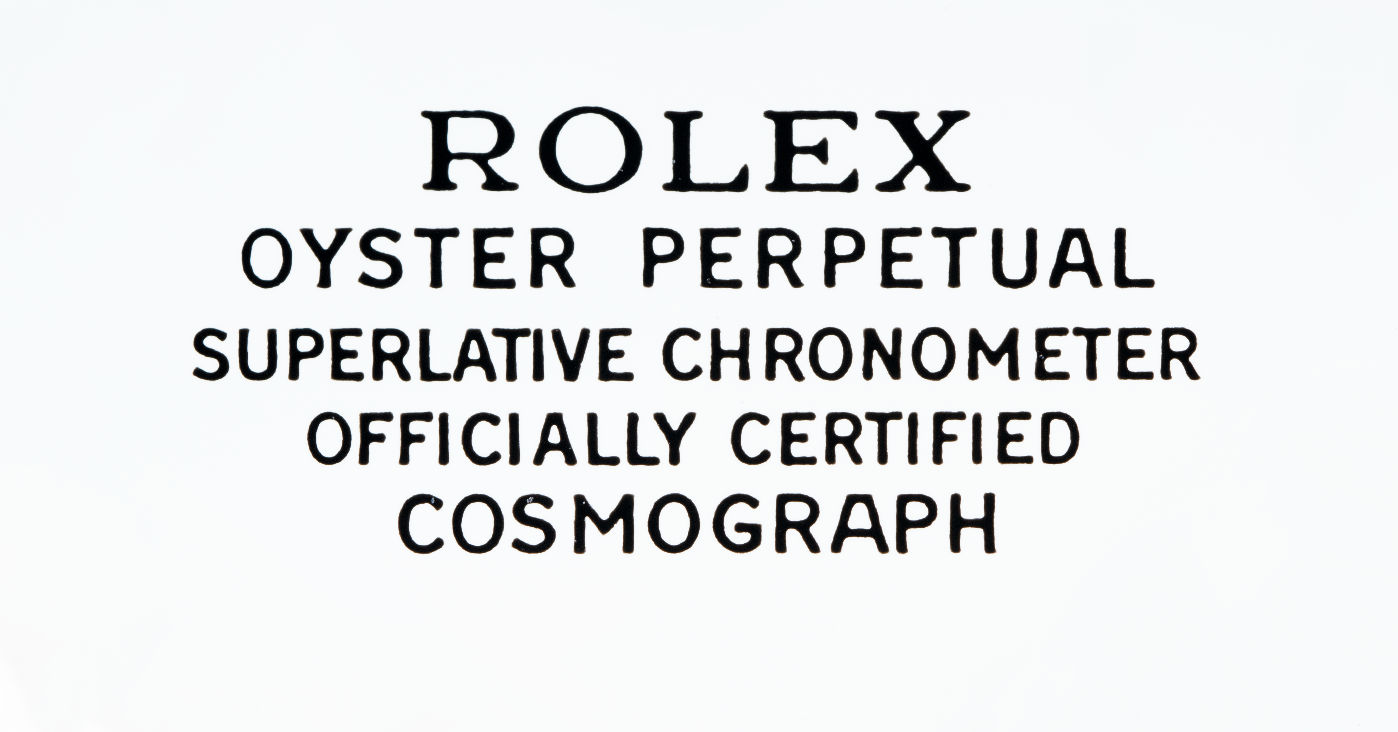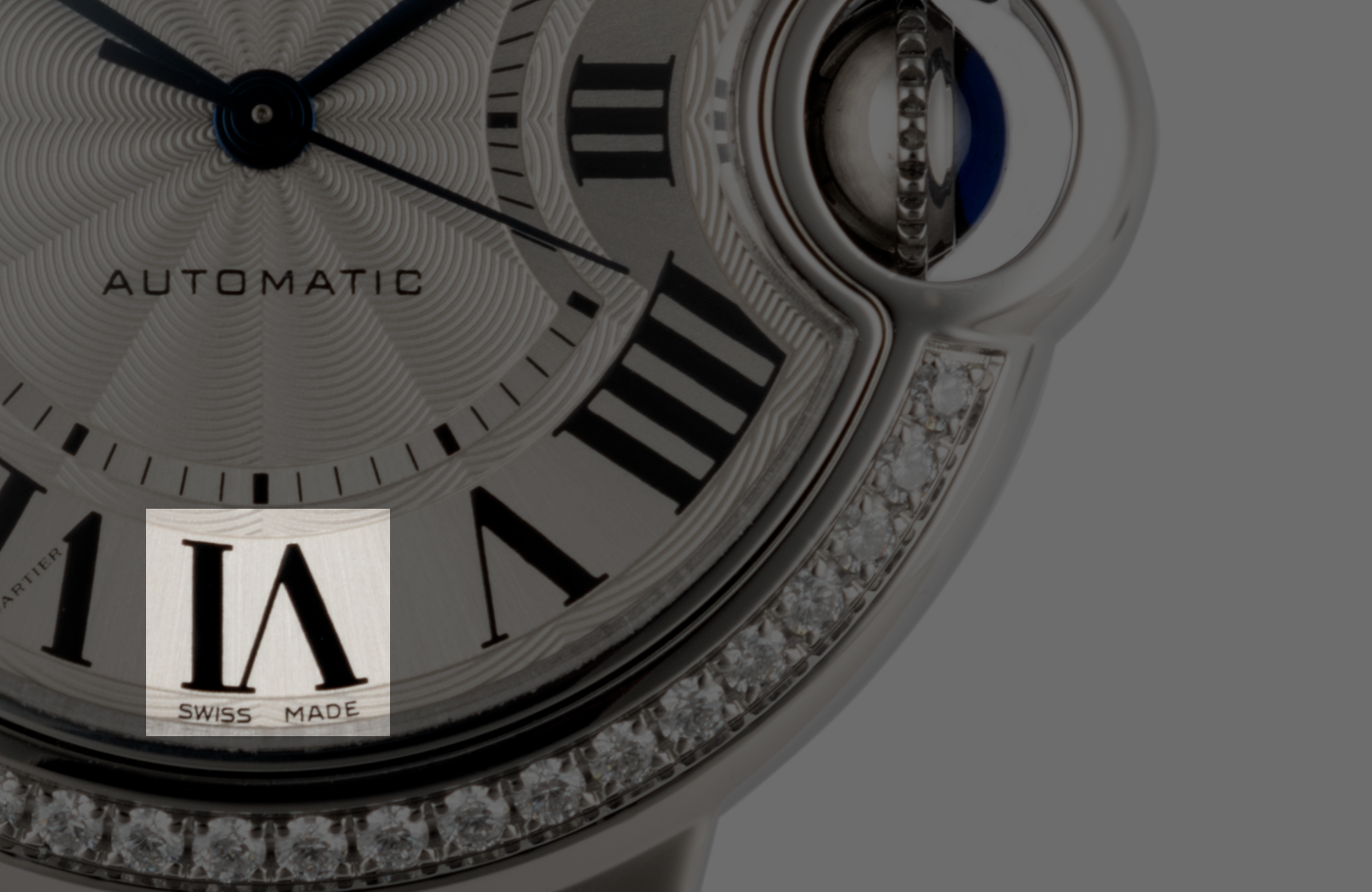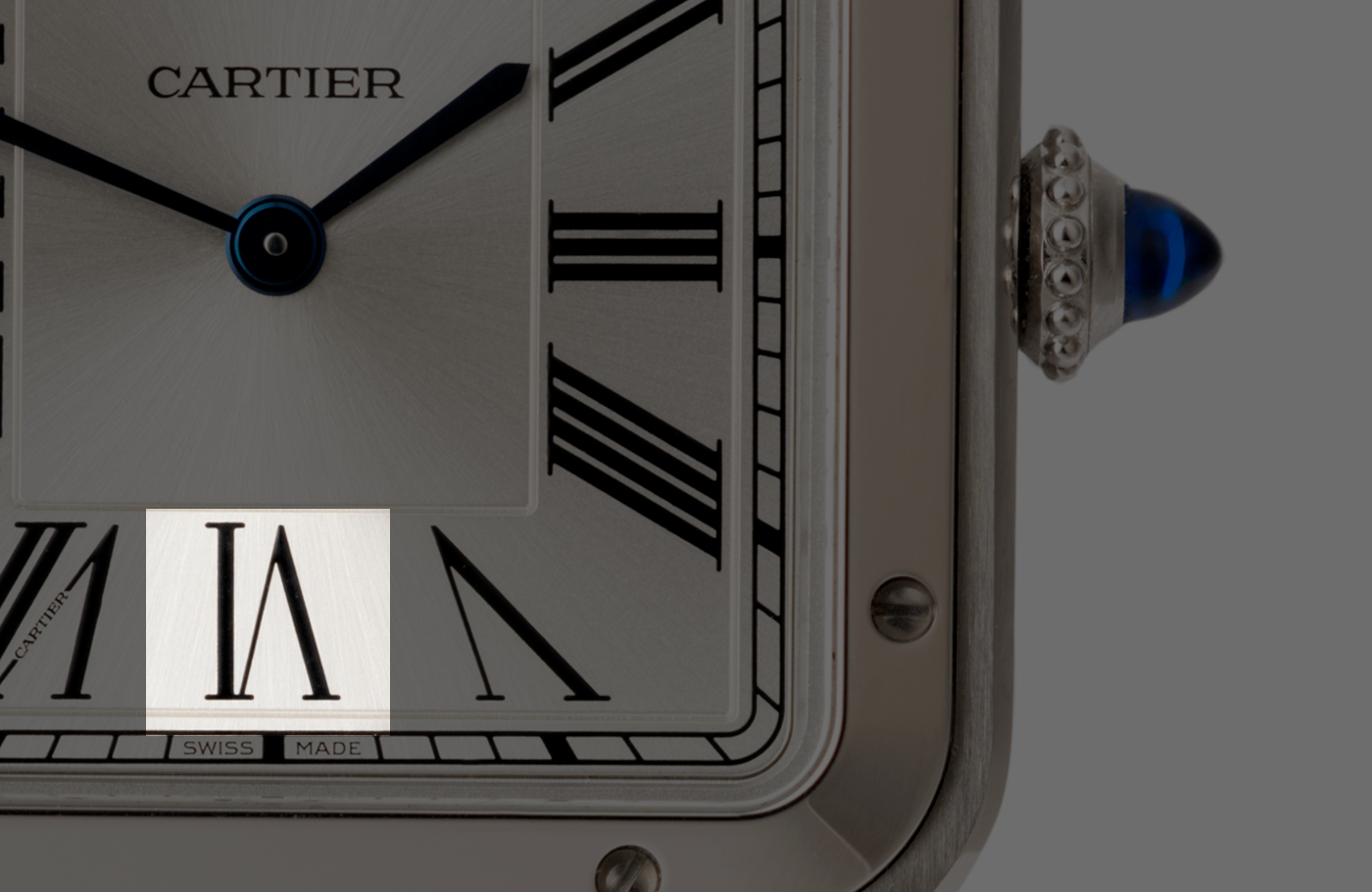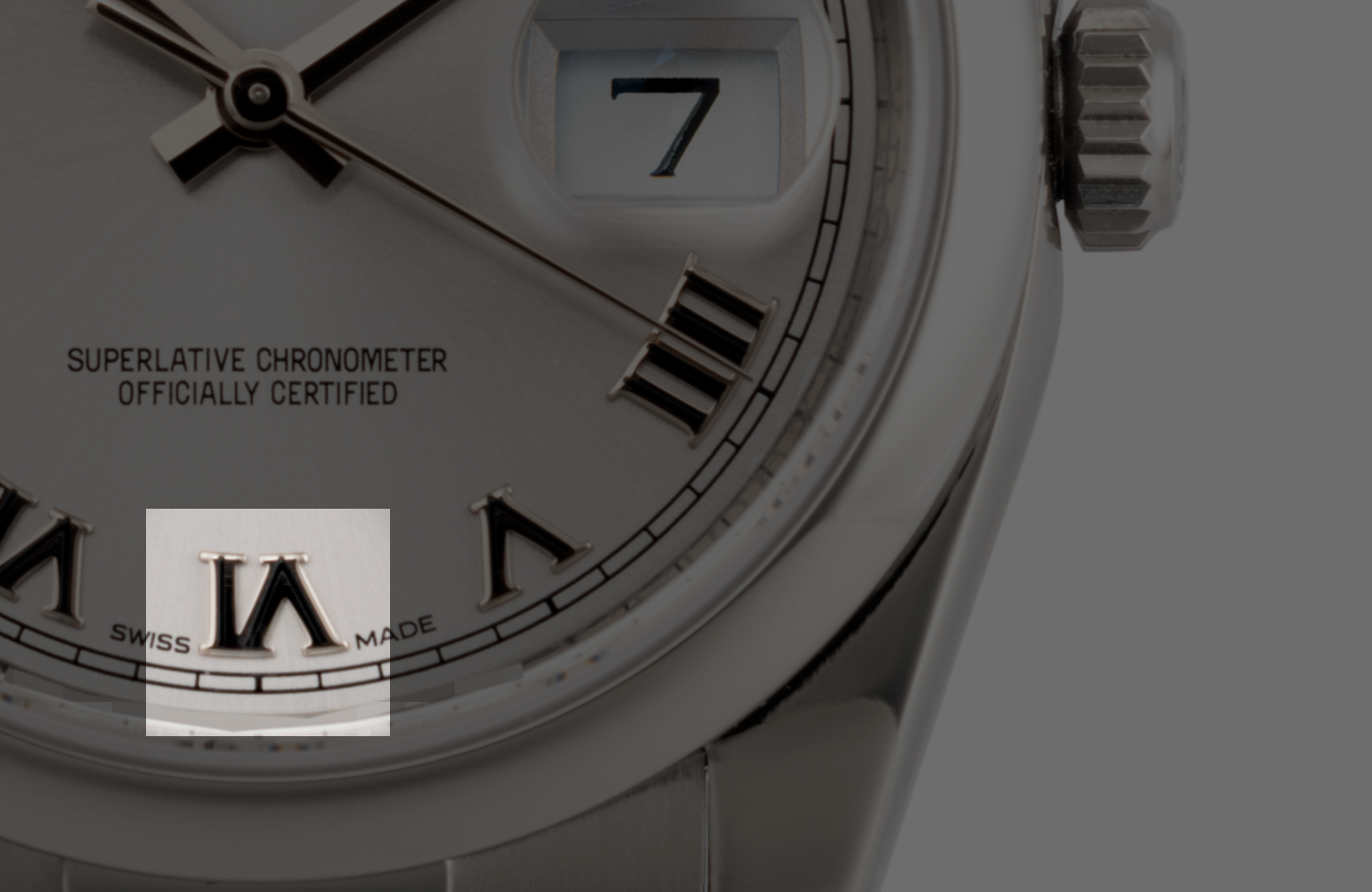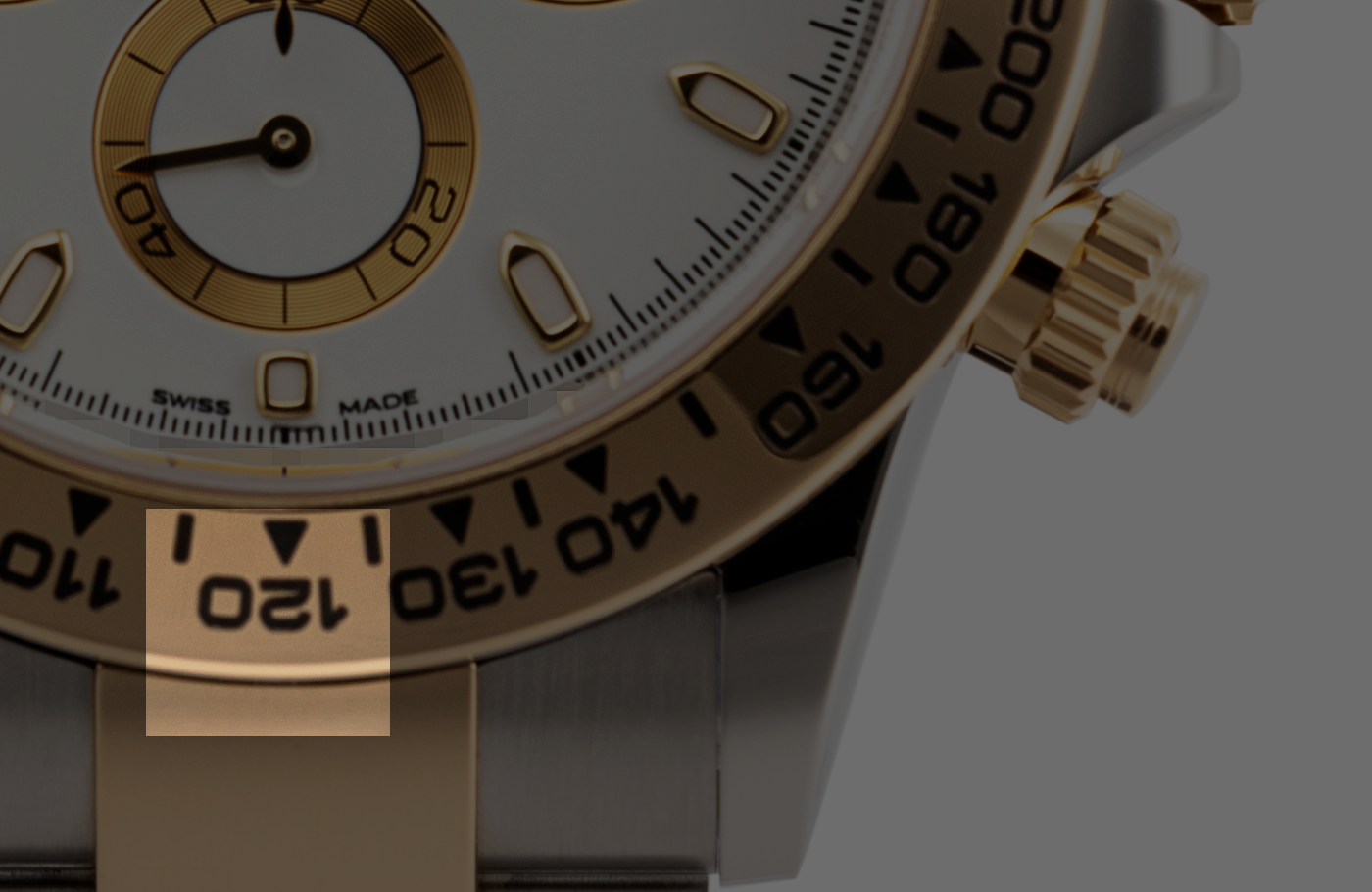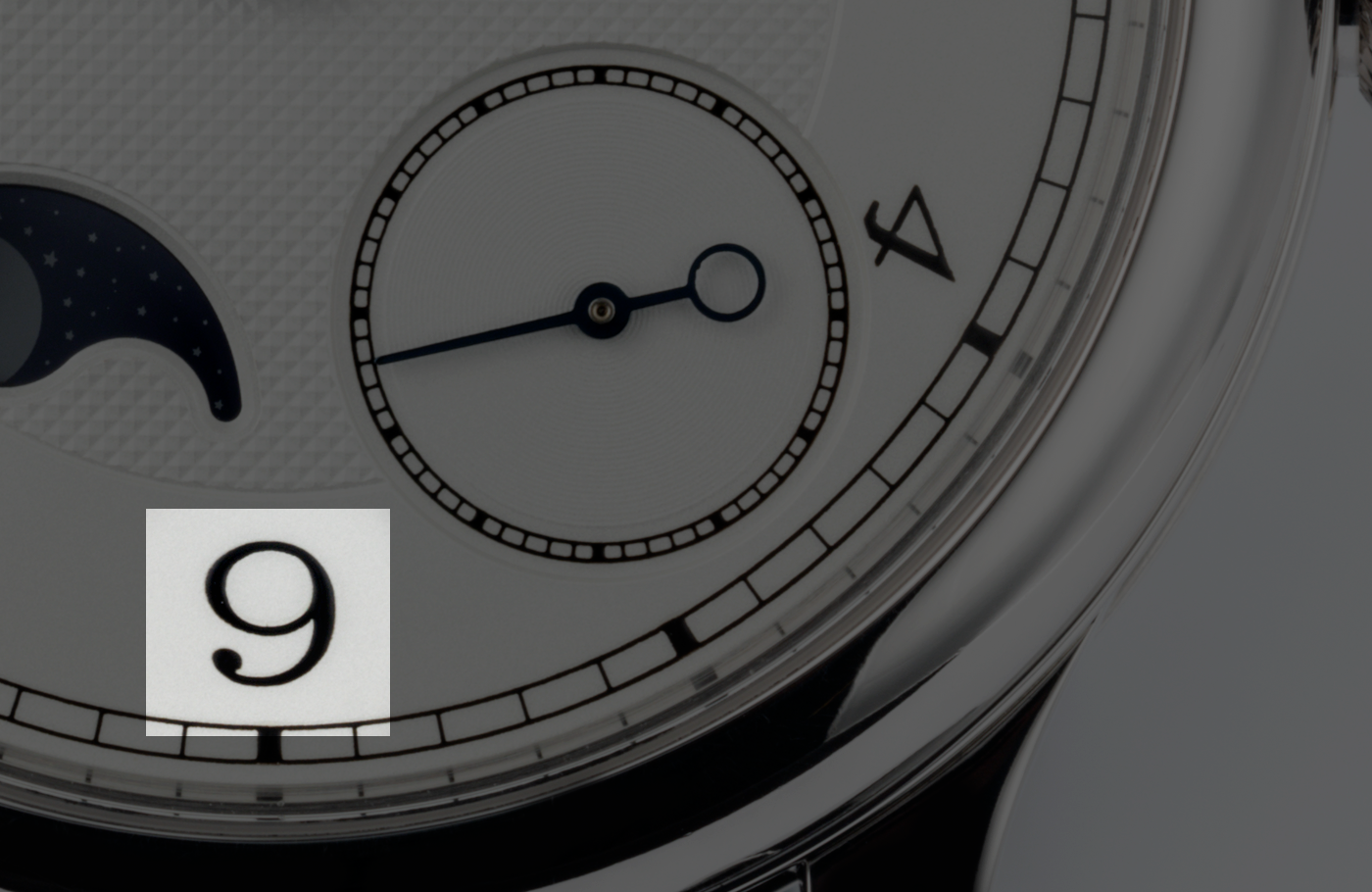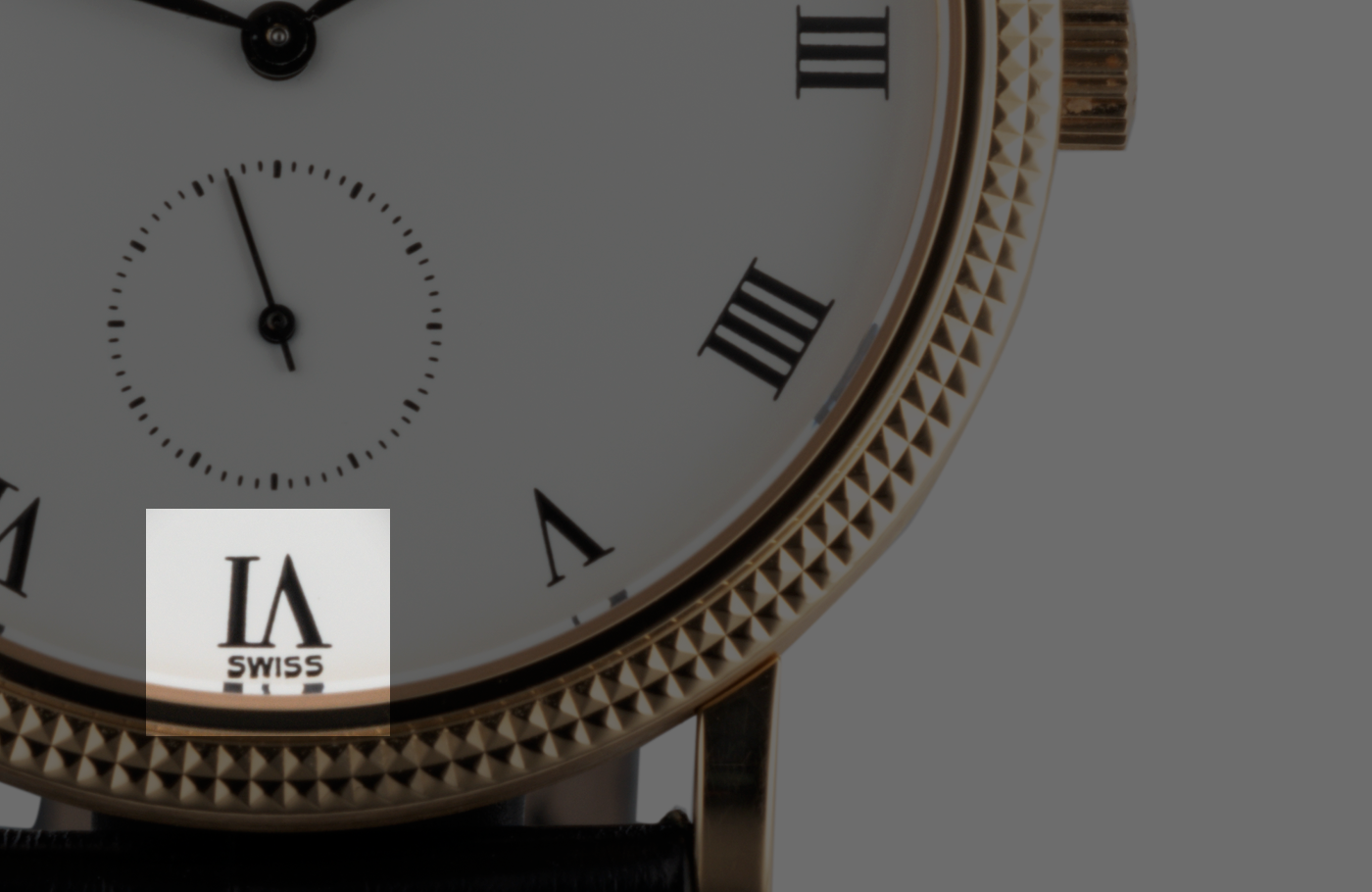What is the Rolex Daytona 'Porcelain'?
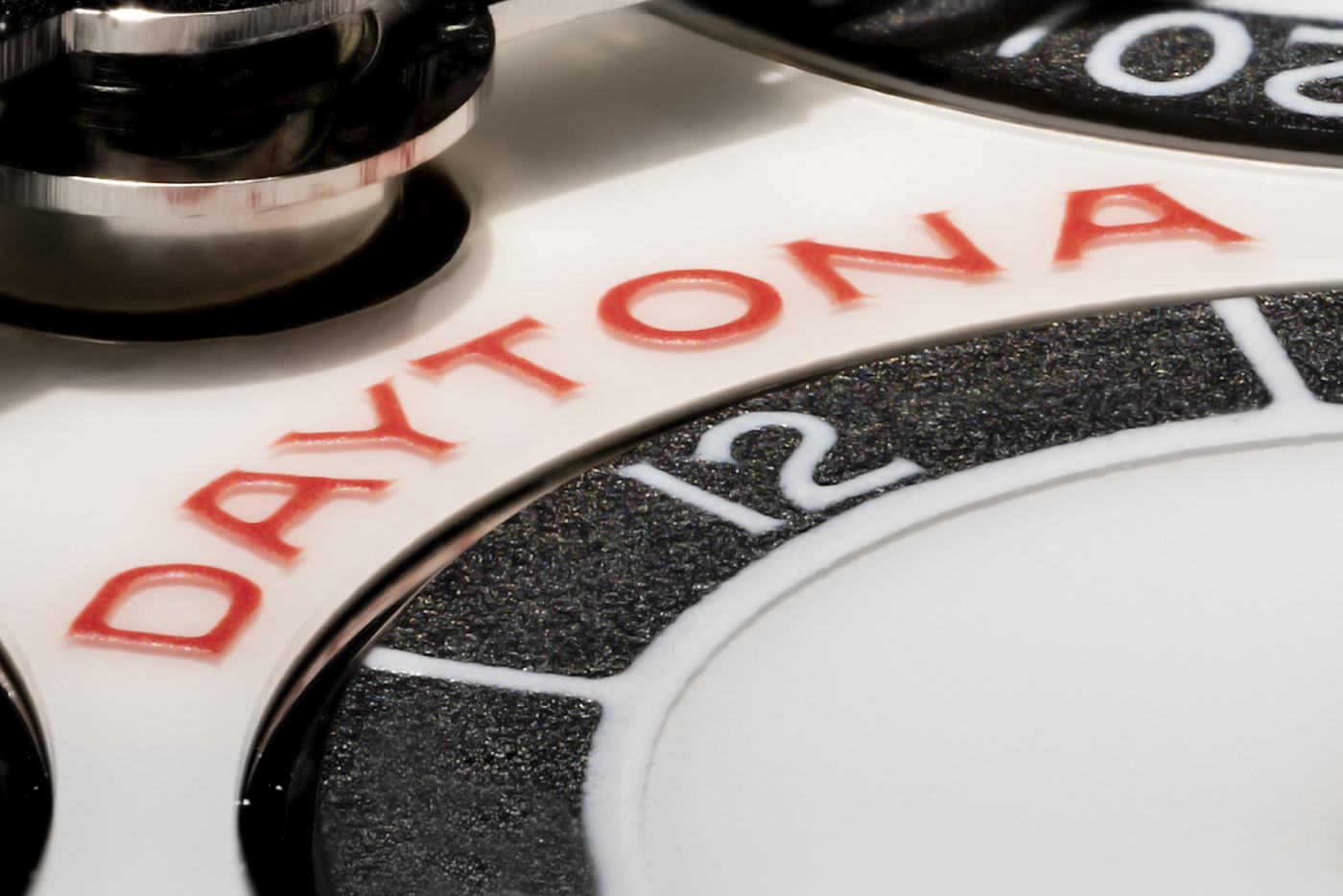
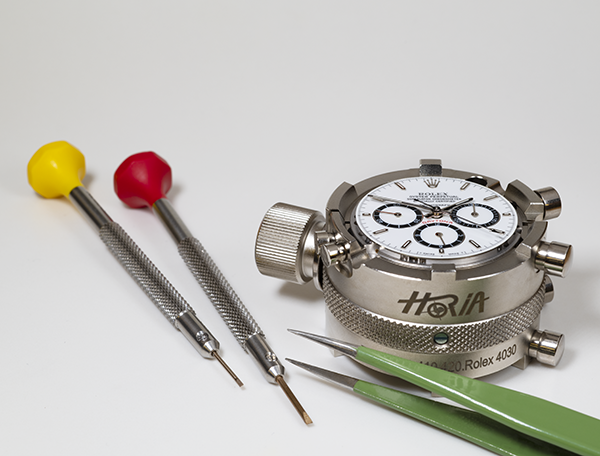
What exactly is a Rolex Daytona ‘Porcelain’? This rare watch with its beautiful, alluring dial has captivated watch collectors since it first appeared at the launch of the then-new 'Zenith' Rolex Daytona Cosmograph. It was made probably for no more than a few months, making it an exceptionally rare piece, with commensurately few examples documented and photographed well.
Let’s explore the intriguing timeline of this watch, along with its successors the '4-Line' and the 'Fat 6'.
__________________________________________
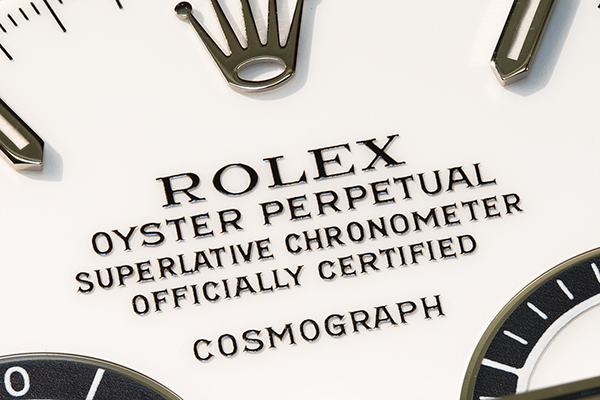
The first Rolex Daytona with a self-winding movement was introduced around Spring 1988. The movement (nicknamed 'El Primero') was obtained from the specialist outsourcers, Zenith Watch Company. All-steel editions of this new Rolex watch were available with either a black or a white dial. The dial on this very first edition has come to be called the 'Porcelain'. Sometimes it is also called the 'Floating Dial'.
Following this, a series of rapid stylistic changes saw a total of five different white dials appear within the first few years of the model's lifetime. There are also black Porcelain/Floating dials, and gilt floating dials for Daytona 16523 and 16528 watches (bi-colour and 18ct yellow gold).
So it is the very first of the Zenith Daytona dials that we now nickname ‘Porcelain’.
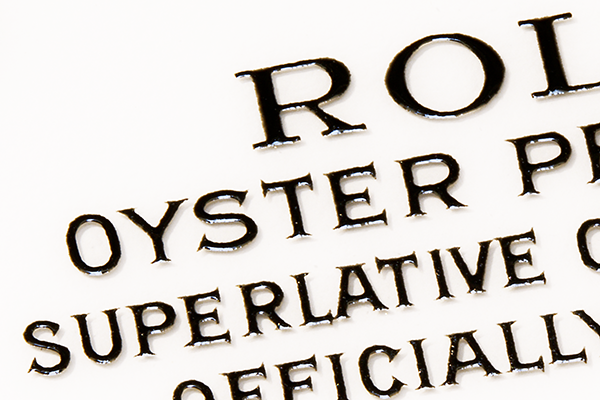
The dial is not actually made of porcelain, but it does have a beautiful translucent multi-layered lacquered surface overlaying a white ground. The upper layer is semi-transparent, giving the dial a three-dimensional depth and a warm glow not apparent on other contemporary Rolex models. Depending on the light, its printed lettering casts a delicate drop-shadow into the surface, adding to this dial's allure.
For its microscopic size, the dial’s lettering is remarkably 3-dimensional. The ink’s viscosity is apparent from the way the letters peak up off the surface, becoming almost tactile. In this, we recall the pronouncement of the famous English typographer, Eric Gill: ‘Letters are things, not pictures of things.’
__________________________________________
“Letters are things, not pictures of things” – Eric Gill
__________________________________________

There are five categories of early Zenith Daytona dial. Here we show Type I. This has a special layout. The word ‘Cosmograph’ is set slightly below the other text, leaving a gap between itself and the block of text above it. The word appears to ‘float’ independently. This is the source of the dial's other nickname, the ‘Floating Dial’. Some collectors also call this configuration ‘4 +1’ (four lines of text plus one).
Type I
The earliest Zenith Daytona dials have these main features:
– ‘Porcelain’ surface
– ‘Floating’ text layout
__________________________________________

Type II
A variation quickly followed. Here, the (probably expensive and difficult to produce) lacquered ‘Porcelain’ surface was abandoned and replaced with a more classical white dial. This dial is also made with a beautiful white lacquer surface, although without the translucent top layer of the Porcelain. Some collectors call this 'Semi-Porcelain'.
On this dial, the text is identical to that on the Porcelain; the implication is that the very same printing plate was used for both.
The second-series dial has:
– Semi-gloss white surface
– ‘Floating’/‘4+1’ text layout
__________________________________________
On the Type I Porcelain, the beautiful semi-transparent lacquer layer also makes the coloured printing slightly paler than it otherwise would be. The very fine details of the serifs also become less pronounced due to their transparent background.
Its immediate successor, the 'Semi-Porcelain', Type II, uses the same printing plate on a more opaque white surface.
<<< Swipe or click across the images to view both.
__________________________________________

Type III
Third in the sequence is another rare dial called the ‘4-Line’. This dial is an enigma, as it omits a key phrase so beloved by Rolex: ‘Officially Certified’.
In the 4-Line, all the text is condensed back into a single block, marking the end of the brief ‘floating’ layout.
– Classical white surface
– ‘4-Line’ text layout
This sequence of three dials was produced during an extremely short window of under 2 years, making these early Zeniths amongst the rarest of all Rolex Daytonas. Arguably they are even rarer than the elusive and valuable Rolex Paul Newman.
__________________________________________

Type IV
After the 4-Line, Rolex re-introduced the missing text, giving us a fourth style, with 5 lines of text, set together in a single block. The text also has fairly distinctive serifs, especially by comparison with the dial that followed. The Type IV dial is called the ‘5-Line Serifed’.
Serifs are the microscopic terminals at the tips and corners of text characters. They have a practical function related to the printing process, and also aid readability.
Also note some features (soon to change) on all dials I–IV:
– The sub-dial to the right has 4 little minute-marking strokes within the primary sectors.
– The sub-dial at the bottom has an ‘upside-down 6’.
__________________________________________

Type V
Soon after the 5-Line Serifed, Rolex made further substantial changes:
– Revised typeface throughout; the text near the 'Rolex' is less serifed
– The type used in the subsidiary dials is wider and more square
– Due to this wider type, some of the sub-dial minute-marking strokes had to be omitted
– The upside-down 6 is brought round to be an upright 6.
This fifth Zenith Daytona dial is sometimes called the "Fat 6" due to the new typeface.
__________________________________________
Types I–III proceeded quickly between 1988 and 1989. Type IV existed until about 1992/1993 when it gave way to Type V. This was clearly a period of rapid stylistic Rolex evolution.
The next photos compare dials Type IV and V.
Type IV: Light typeface with serifs
Type V: Heavier typeface
<<< Swipe or click across:
__________________________________________
Upside-Down 6
Dials I–IV have the hour-recording 6 upside-down, making it look like a 9. Collectors call this the Upside-Down 6, or the Inverted 6. How did it come about that Rolex made a dial with an upside-down digit?
Well, having ‘tumbling’ digits is not unusual. Watches and clocks all the way from mediaeval times right up to today have an ‘upside-down 6’, including thousands of contemporary and luxury models. Imagine the digits effectively written in a straight line and then wrapped or rolled round the dial.
Swipe across <<< to see examples of contemporary upside-down digits.
__________________________________________
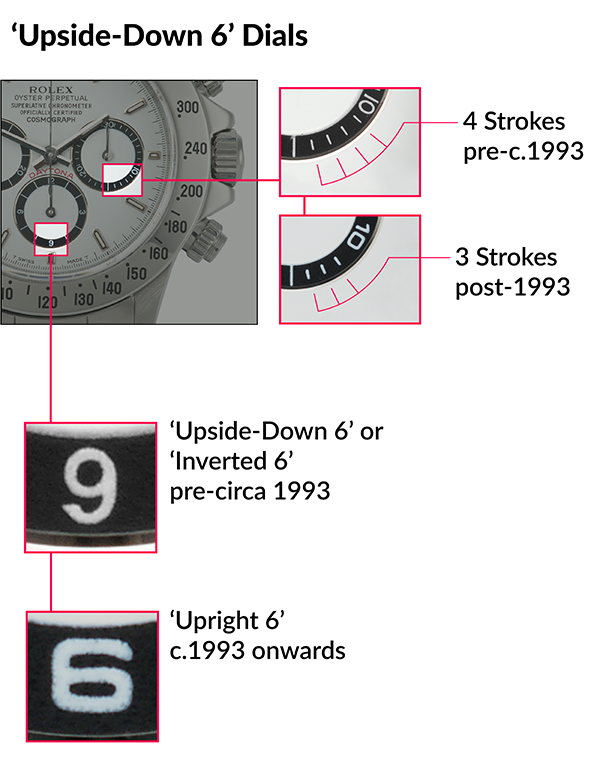
Maybe because the Daytona’s 6 doesn’t have other digits flanking it, the brain sees it as a symbol in isolation, making it look like a 9.
The new dial with 'corrected' 6 was introduced around 1992/1993. You could argue that this was actually the moment when the 6 was turned upside-down and has stayed that way ever since!
Also illustrated here is how the new, fatter, typeface forced out one of the minute-markings in each sector of the right-most sub-dial; the Type V dial has 3 strokes there rather than 4. This is better than trying to crowd in the extra stroke.
__________________________________________
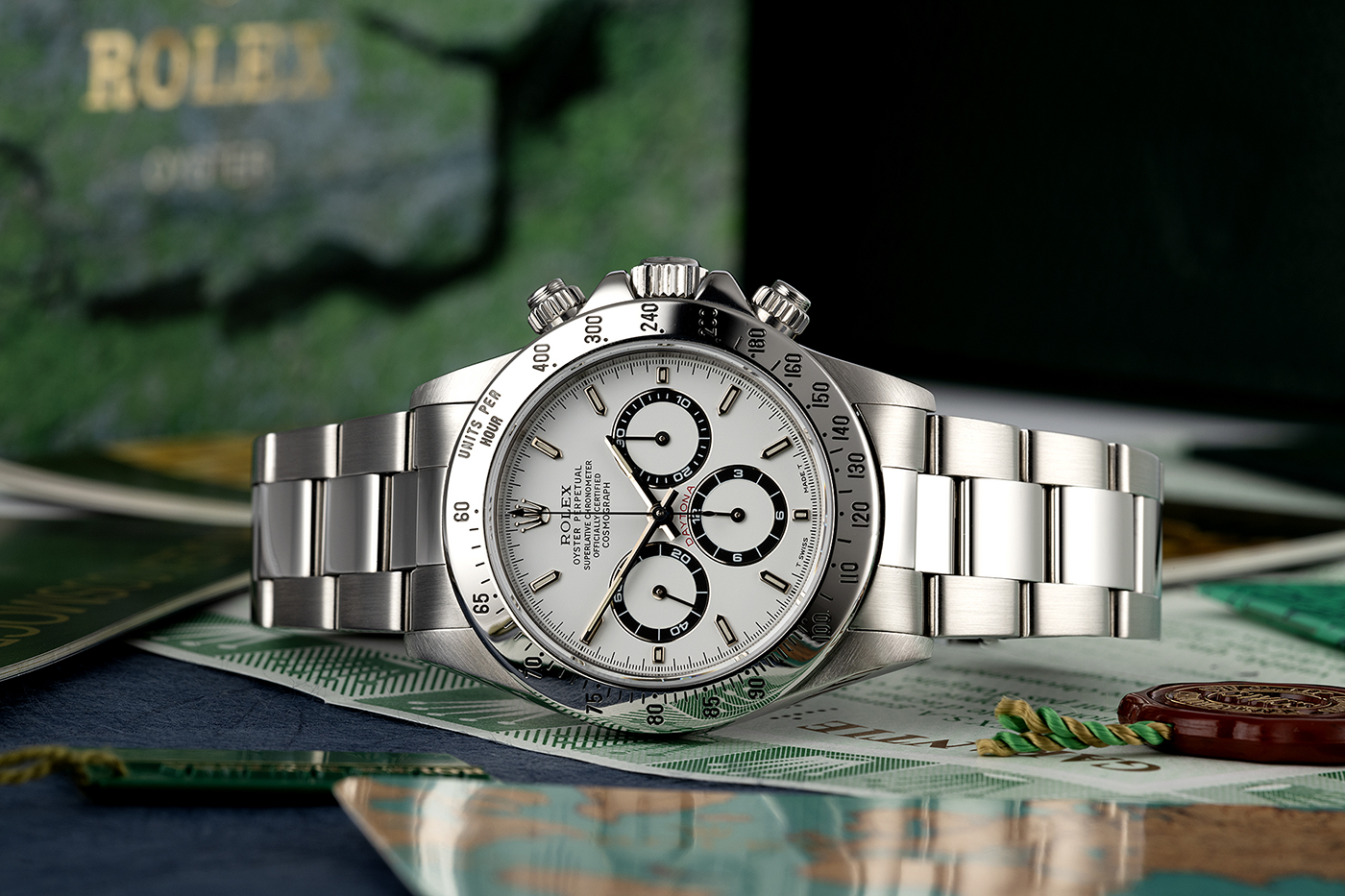
Zenith Daytona 16520 with Type V ('Fat 6' or 'Upright 6') dial.
__________________________________________
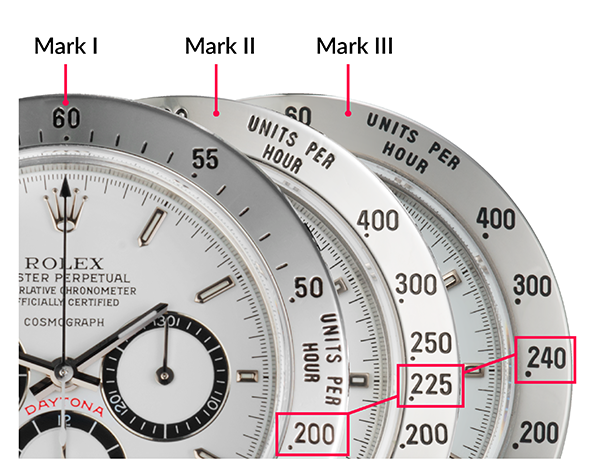
Bezels
At the same time, the watch bezel also underwent some aesthetic revisions.
The first type (‘Mark I’) appeared with the new model in early 1988. The highest number on the calibrated scale was 200. The expression ‘Units per Hour’ was engraved at 3.
Mark II appeared soon afterward. Here, the top number was 400, and ‘Units per Hour’ has been shifted to 1 to accommodate the higher digits. The calibration point immediately following 200 on this bezel is 225, followed by 250, 300 and 400.
This was soon replaced by Mark III, where 225 and 250 were done away with, replaced with 240.
The Mark I, II and III bezels are more popularly known as ‘200’, ‘225’ and ‘240’ bezels respectively.
__________________________________________
Which Came First?
Correct examples of Semi-Porcelain (Type II) dials and 4-Line dials have appeared contemporaneously, and there are known examples of Type II with earlier serial numbers than even some Porcelains. Some collectors therefore have different views on the sequence of these dials.
Rolex serial numbers at that time were a letter, followed by 6 digits. The letter was changed every year. R was the 1988 release. L was 1989.
There's consensus that Porcelain Daytonas generally have a serial numbers starting with “R9…”.
Semi-Porcelain Floating dials (Type II) seem to appear most in the range R9 to L2/L3. The 4-Line appears with serial numbers starting in high L2.
From examination of serial number evidence of unaltered examples, the most logical sequence of dials seems to us as the most likely: Porcelain gives way to Semi-Porcelain, followed by 4-Line. This in turn was corrected by replacing the 4-Line with the Inverted 6, and its successor the Fat 6.
In other words:
Type I: Porcelain (Floating/4+1)
Type II: Semi-Porcelain Floating
Type III: 4-Line
Type IV: 5-Line Inverted 6
Type V: 5-Line Fat 6
…with a small amount of overlap between all types, depending on production runs, batched-delivery and market region.
Alternative Timeline
Some collectors assert that Rolex reverted to the earlier printing plate after issuing the 4-Line. The hypothesis is that after the Porcelain came the 4-Line. However, upon realising the 'error' of the missing line of text, Rolex (or their dial-maker, Singer) rapidly reverted to the older printing plate (creating the semi-porcelain dial in an emergency), whilst a fresh dial layout was organised. This fresh layout was the 5-Line/Inverted 6, and so on.
Maybe that's true. Maybe we will never know. However, by our experience, based on watches we have handled, the original timeline mentioned above is the most likely (Porcelain, Semi-Porcelain, 4-Line, etc).
__________________________________________
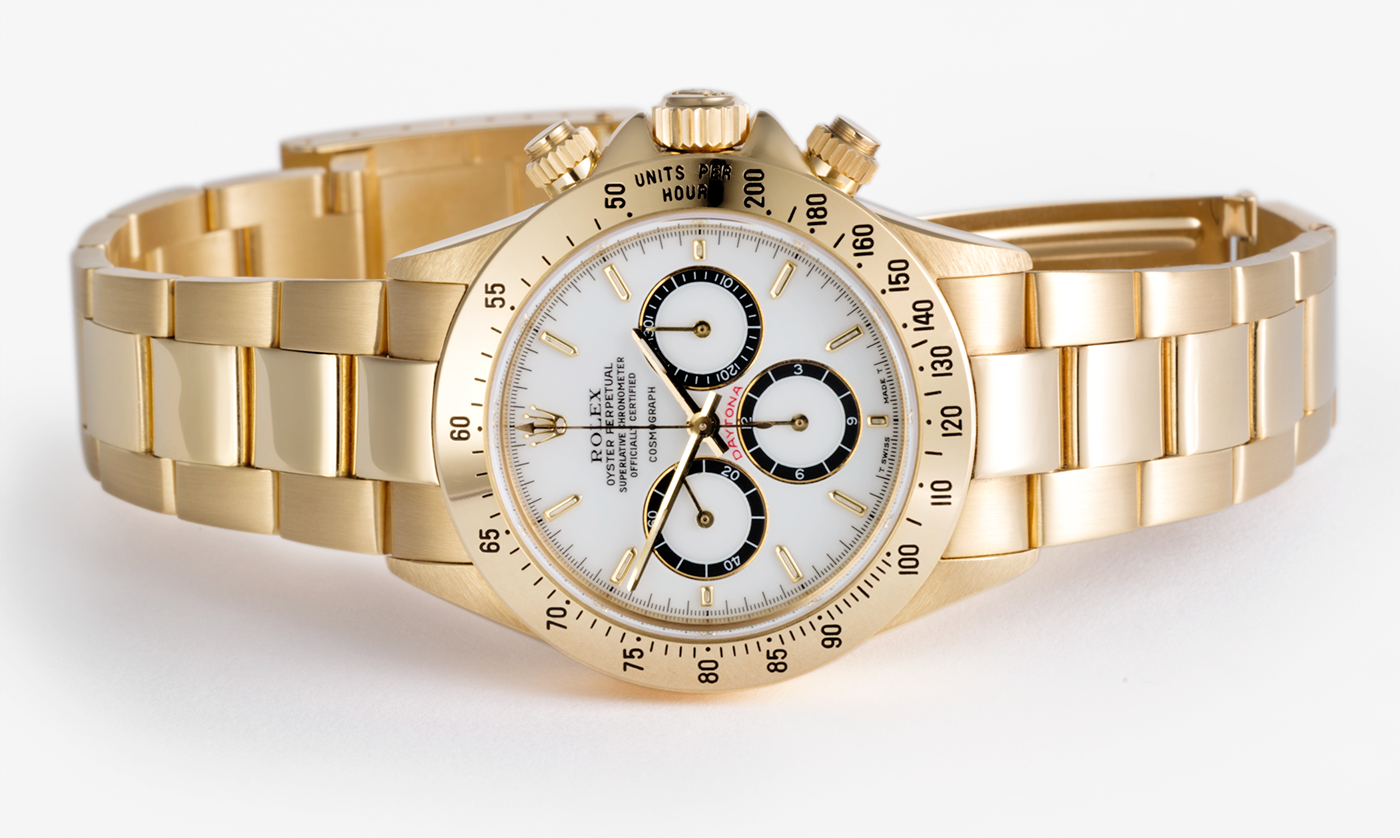
The Floating or Porcelain dial seen here on a solid gold Rolex Daytona 16528 dated March 1988 – likely among the first Zenith Daytonas ever sold.
__________________________________________
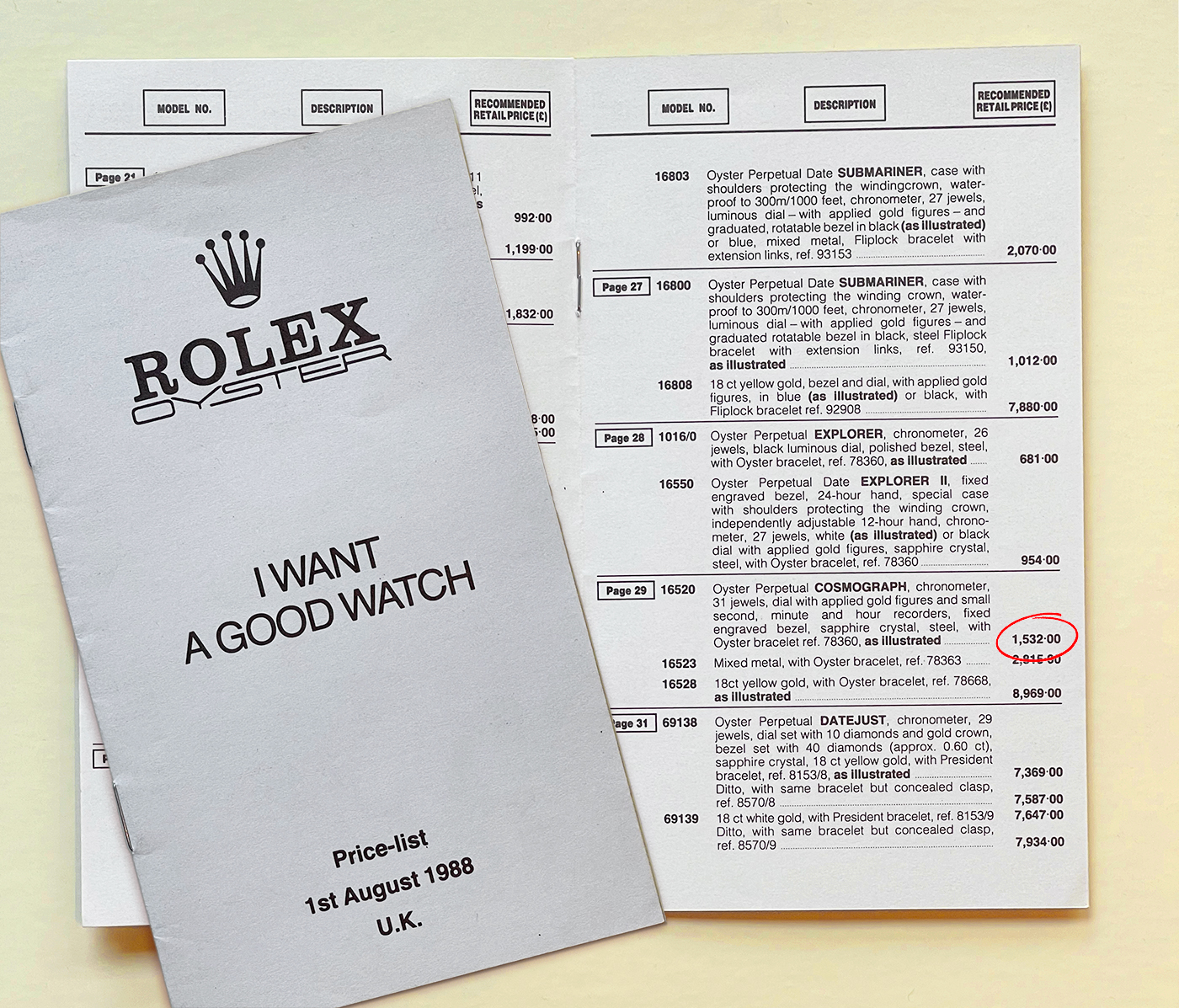
Good Value?
The Porcelain 'Floating Dial' Daytona, introduced in 1988, had a UK RRP of £1,532. In the past few years, the watch has outclassed all other steel Zenith Daytona 16520s; in the past few years it has sold at auction for between around £100,000 and £240,000, with its late 1980s and early 1990s siblings also commanding stiff premiums over later 'classical' 1990s 16520 Daytonas. We think this is an exceptional series of watches, worthy of every serious collector.
__________________________________________
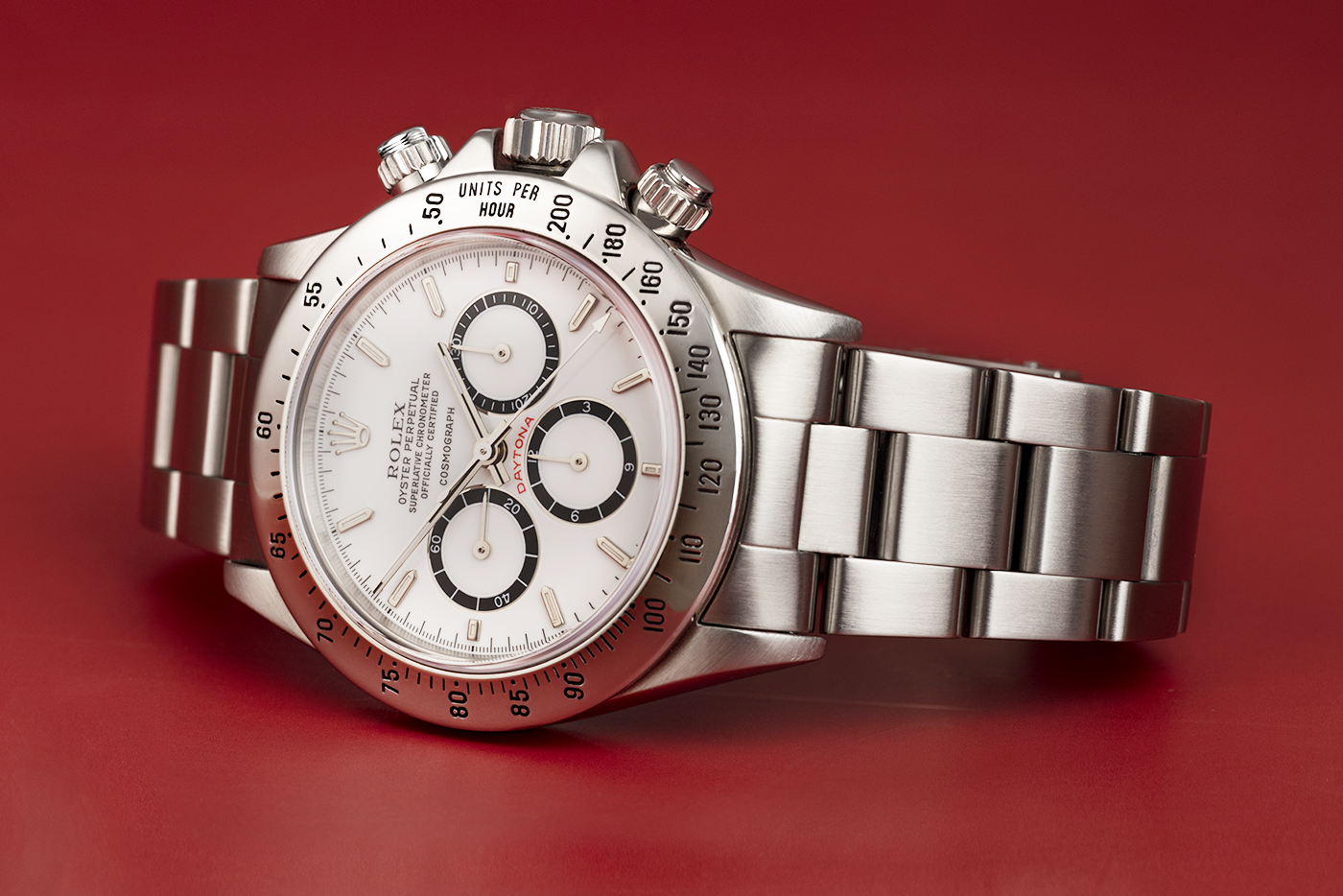
Porcelain? Enamel?
How did the nickname ‘Porcelain’ come about anyway? Objectively, this dial does have something of the mystique of fine bone China about it, with its milky whiteness, the way light slightly transmits through its refined, smooth surface.
Rather than by these direct poetic comparisons, the nickname actually settled via a sequence of coincidental mis-naming by certain European publishers. First, some commentators started calling this dial ‘enamel’. In connection with the first Zenith Daytona dial, the €5,000 book, Ultimate Rolex Daytona, even describes at length how enamel (coloured glass melted onto a metal base) is fired in a furnace at 850 degrees.
Enamel can offer a beautiful finish similar to the dial in question. But the first Zenith Daytona dial is not enamelled.
Later, a further group of collectors mis-named ‘enamel’ as ‘porcelain’. This apparently conscious mis-naming has crept into descriptions of even genuine enamel dials, such as found on the famous Patek Philippe 2526.
Contradicting this error, authoritative author and collector Osvaldo Patrizzi says plainly in his 2012 book, Daytona Story that these Daytona dials are “…incorrectly called enamel.”
Revising their assertions made in Ultimate Rolex Daytona, the latest book, Daytona Perpetual by the same publishers now correctly describes these white dials as “made of lacquer…known today as ‘porcelain dials’”.
__________________________________________
So now we know... The Porcelain Daytona or Floating Daytona is the very first Rolex Cosmograph with Zenith movement, introduced in 1988.
We illustrated only the white version of this dial here, as fitted to the steel Daytona model 16520. The Porcelain and Semi-Porcelain Floating layout also appeared on black dials, and dials for gold and bi-colour Daytonas 16523 and 16528.
The Floating Porcelain Daytona dial is as rare as it is beautiful. It has a rich three-dimensional surface and tactile black text. The name ‘Porcelain’ is a lovely, appealing metaphor for the attractive and extremely refined dial finish of this exceptionally rare Daytona.
__________________________________________
The Watch Club is grateful to collector CY, who lent us a Zenith Daytona "Type V", for the close-up photos of that dial.

